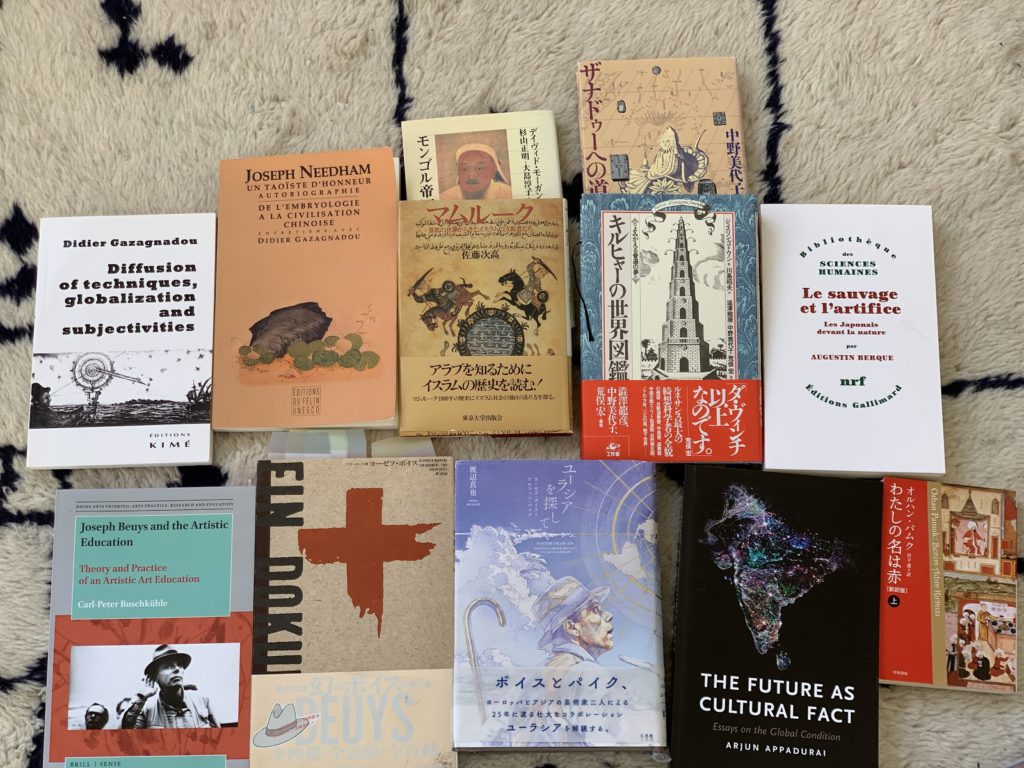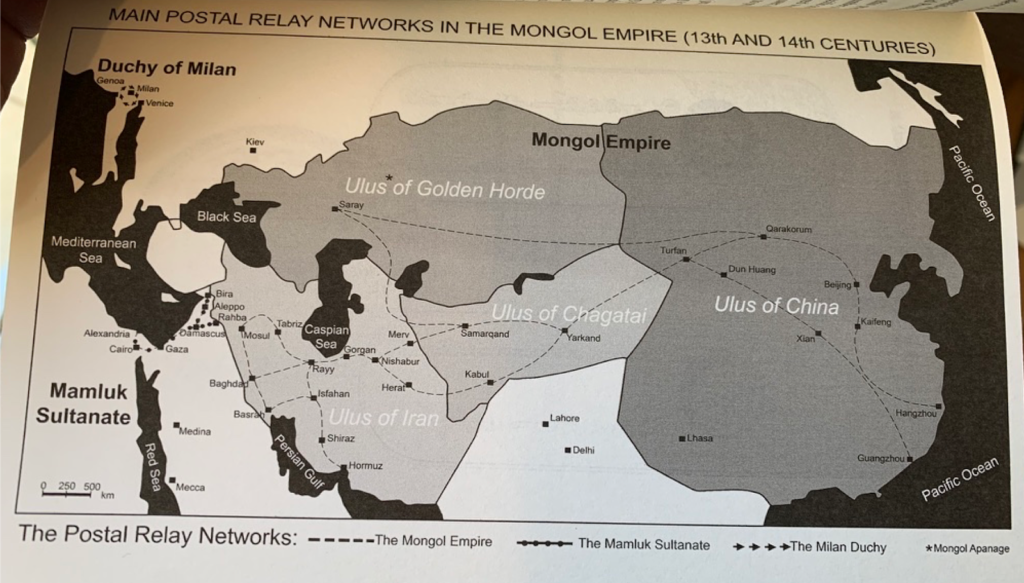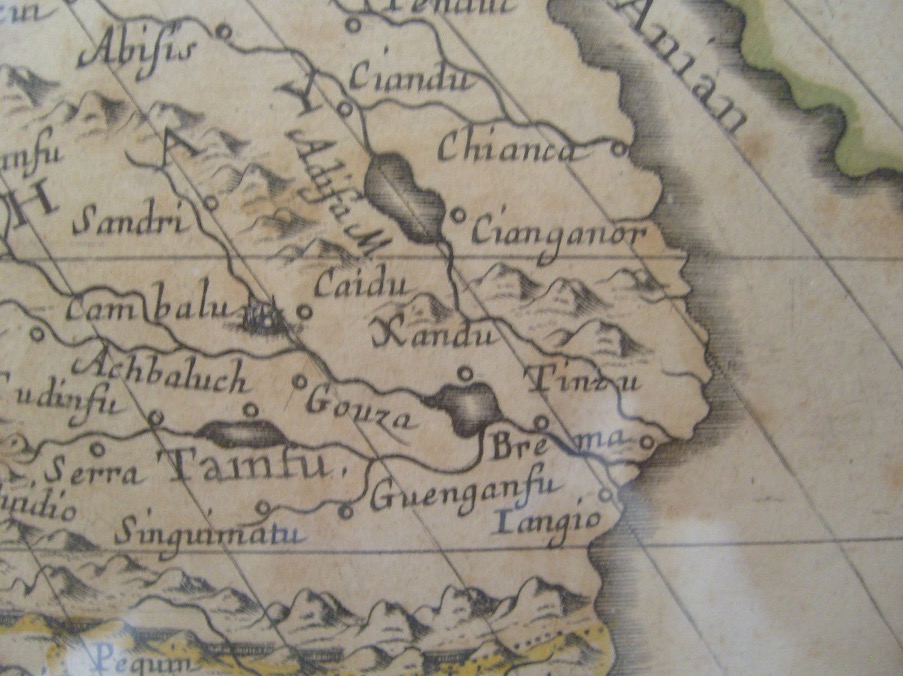For Joseph Beuys, Eurasia was an image that evoked a utopia where the Eastern and Western worlds melt into one. Beuys’ self-produced myth best symbolizes this: when he crashed in Crimea as a pilot in the Nazi Luftwaffe, he was allegedly rescued by Crimean Tatars. This legend explains his use of felt and fat, daily materials used by the Eurasian nomads. Through various works and performances, Beuys attempted to evoke Eurasia as a uniting vision to tie the West and the East.
As a French citizen of Japanese, Taiwanese, and Vietnamese descent, born, raised, and living in regional cultures at the western and eastern ‘ends’ of Eurasia, I have been fascinated by Beuys’ Eurasian concept, and more generally, by the history of Eurasia. And as an information scientist exploring the potential of communication technologies, I’ve discovered valuable knowledge and lessons from the cultural evolution of Eurasia.
Because of my multiethnicity, the problem of translation — and mistranslation — has shaped both my personal and professional interests. As a curator, I recently directed the “Translations – Understanding Misunderstanding” show at the 21_21 DESIGN SIGHT in Tokyo, where various art, design, and research works on interhuman and interspecies communication shed light on the value of untranslatability as well as translatability.
In the face of today’s landscape of political polarization and social divides, the theme of “understanding the unknown” is becoming more and more important. With this thought in mind, I began my exploration of Eurasia, looking at Beuys’ work as a starting point.

Soon after I started my survey, I realized that I only have textual information about Eurasia, and almost no living experience in the Central or Inner Asian region: the only ‘proper’ Inner Asian country I have visited, as a tourist, is Mongolia. And I asked myself. How much do we know about the Eurasian reality today? How relevant is Beuys’ parochial ‘Eurasia’ to that massive complex place and space, imagined and experienced?
Given that Japan was one of the earliest and most deeply influenced countries by Western society in Far East Asia, the “we” I am using here is referring to those who belong to the largest sense of the term “West.” As such, I myself have the same kind of yearning for the concept of Eurasia and the foreign border of Central Asia as Beuys did. But why is that? Is it an idea that should be criticized or rejected as another form of Orientalism?
To confront these questions and depart from my own ignorance, I have been reading up on Central Asia’s history from ancient to medieval times and from the early modern period to the present. In this process, I have learned how Central Asia’s history has been written from the perspective of the conflicts between great powers, such as Chinese dynasties, the empires of Genghis Khan and his descendants, and Russia and China in the modern and contemporary era. When we look at history from such a perspective, the regions of Central/Inner Asia, which literally form the core of Eurasia, appear to be lurking in these great powers’ shadows. Modern states tend to promote their history of hegemony, often exaggerating their achievements. Still, this political trend would only reduce Eurasia to a place where nationalism clashes.
What I am fundamentally interested in is the cultural dynamics that have swirled within the vast platform of Eurasia. These dynamics have nurtured heterogeneous cultures and the complexity that is the fruit of these dynamics. Understanding Eurasia in terms of a simple stereotype of “nomadic people of the steppes” (which was a historical stereotype forged also by Sinocentrism, such as the Great Chinese Wall built against the “barbarians” / 夷狄) does not allow us to grasp this complexity. Therefore, to respond to Beuys’ concept of Eurasia today, it is necessary to free our perception of Eurasia from the yoke of Western and other hegemonic viewpoints of history.
How can we free ourselves from such biases? I have been intrigued by the historical evolution of information networks in Eurasia studied by Didier Gazagnadou, a specialist in cultural diffusion in Eurasia. He has, among numerous other themes, researched how the military system of Jamchi of the Mongol Empire borrowed from previous Chinese dynasties influenced later European postal networks*1. In the process, a great variety of technologies, such as agricultural tools and household goods, diffused, transformed, and mixed throughout Eurasia. This exciting flow of cultures was born through a physical network that required distance and time, which is qualitatively different from today’s Internet that connects time and space instantly. Then, what are the cultural, artistic, and philosophical realities that have been created in these confluences of massive information and materials?

To engage in this question, I turn to the misunderstandings engendered throughout the history of Eurasia. Eurasia is the geographical name for the world’s largest continent, encompassing Europe and Asia. However, Eurasia is a concept that covers such a vast area that it makes us wonder whether anyone identifies oneself as “Eurasian.” (of course, other than the political exploitation of the term by state apparatus such as Russia or Kazakhstan) Beuys incorporated such an abstract image of Eurasia into his own artistic expression as a symbol of an integrated world: his active period coincides with the Cold War era after World War II when Germany was divided into East and West camps. According to researcher and curator Shinya Watanabe, who wrote a comprehensive review on Beuys’ EUR-ASIA project*2, Beuys was captivated by the similarities between mythologies in the West and East Eurasia. However, as far as I know at this point, he never lived or stayed extendedly to any of the Central/Inner Asian countries.
Actually, many Europeans have projected fantastic longings for the Eastern lands since way before Beuys. Samuel Coleridge, an English Romantic poet of the late 18th century, wrote “Kubla Khan,” where he describes the summer capital of Kublai Khan, Shàngdū, as a great city of pleasure. Since then, “Xanadu” (a mistranscription of Shàngdū by the Christian missionaries) has been used in Western culture as a synonym of a mirage-like utopia. Coleridge’s poem inspired many literary works; its influence can even be seen in contemporary technoculture. The computer scientist Ted Nelson named his hypertext project Xanadu*3, and a popular video game of the same name was published in the 1980s*4.

Rumors and illusions are the results of ignorance and incomplete information. Until the development of sea routes and air routes, telegraph networks, and later the Internet, the enormous distance separating the east and west of Eurasia has been a medium for various misunderstandings and gossips along with a variety of people, goods, and cultures. Perhaps the most dramatic example of illusions born in Eurasia is the legend of Prester John. As the Christian world confronted the Muslim world with multiple Crusader expeditions beginning in the 11th century, rumors spread that John, a Christian priest-king, ruled a kingdom in the far east and would eventually come to Europe’s rescue.
In fact, the origin of this rumor was Yélǜdàshí(Chinese notation: 耶律大石), a descendant of the Liao(遼) empire of the nomadic Qidan(契丹) people, which had been destroyed by the Jin(金) State of the Jusen(女真) people, and who had defeated the Seljuk dynasty’s Ahmad Sanjar at Khatwan near Samarkand and founded the Western Liao Empire (西遼, also known as Kara-Kitai). The Vatican did not know the true identity of Prestor John until 1246 when Pope Innocent IV received a threatening reply in Persian from Güyük, the grandson of Genghis Khan. Carpine, the Pope’s messenger to the Khan, also discovered that the Mongol empire held numerous Nestorian Christian vassals*5.
It is easy to look back on this chain of misunderstandings from today’s perspective and be surprised by the imperfectness of information flow back then. Instead, it would be more beneficial to consider the rumors and fantasies as materials to understand Eurasian culture’s complexity. Indeed, the vast landmass of Eurasia has nurtured a history of countless interactions and conflicts among its diverse inhabitants in a complex cultural dynamic.
Indeed, I have been fascinated by this kind of tale about misunderstandings generated between distant worlds. I have long wondered the reason of my fascination; these stories are not just failures of communications, but they are also pieces of evidence of a significant number of people such as the Uyghurs, Tatars, Koreans, and many other people who had been oppressed and deterritorialized by the wars and deportations of historical empires and contemporary states in Eurasia.
As having multiethnic backgrounds myself, I feel connected to the complicated entanglements of these people, which nurtured the Eurasian cultural landscape. Another example of such a deterritorialized Eurasian is Yēlǜ Chǔcái (Chinese notation: 耶律楚材), a descendant of the nomadic Qidan people born at the twilight days of the Jin empire, who served Gengis Khan as a high-level bureaucrat. He indirectly helped the Mongol empire to annihilate the Western Liao empire founded by his ethnic ancestors, but also strived to save the lives of the population by introducing rational policies in the conquered territories.
Beuys’ references to Eurasian culture are still vague and obscure. His attempt to escape the dichotomy of capitalism and communism in the Cold War era through his esoteric depiction of Eurasia somewhat evokes the medieval Christians who tried to outline the non-existent vision of Prester John. Maybe his mysterious stance explains my fascination thus far for the image of Eurasia, but now, I wish to depart from this structure of fantasy, in order to unfold the complex reality of Eurasia.
To do so, I came to the conclusion that we need to start from inside the Central/Inner Asian regions instead of just observing or appropriating them from outside. For this, I wish to reenact the complex cultural dynamics of the Eurasian postal relay network with today’s means so that we could discern the ever-fluctuating reality of Eurasia.
In the course of my trail following the felt and fantasies across Eurasia, I was fortunate to meet Selbi Jumayeva, a documentary artist and visual researcher of a Central Asian quotidien life.As a connoisseur of fat and folk arts, she appreciated my idea to connect artisans and artists from Central Asia to the larger continent en route to Japan. I’m very happy and honored that Selbi accepted my invitation to join the EURASIA program as a co-lead associate. Her equal presence in the project is also an invaluable guidance into the wealth and complexity of the lives and cultures of Eurasia.
Together, we will seek and facilitate possibilities for the material exchanges and interdisciplinary between the diverse artisans and artists of Eurasia via postal networks and internet platforms within and beyond Beuys’ notion of “the expanded definition of art”.
1: Didier Gazagnadou, Diffusion of techniques, globalization and subjectivities, Éditions Kimé, 2017
2: Shinya Watanabe, Searching for EUR-ASIA Joseph Beuys and Nam June Paik’s Life Long Collaboration, doctoral dissertation, Berlin University of the Arts, Berlin 2017, https://opus4.kobv.de/opus4-udk/frontdoor/index/index/docId/1074, accessed 14 March 2021.
3: PROJECT XANADU, https://xanadu.com/, accessed 14 March 2021.
4: Wikipedia contributors. (2021, March 10). Xanadu (video game). In Wikipedia, The Free Encyclopedia. Retrieved 07:56, March 14, 2021, from https://en.wikipedia.org/w/index.php?title=Xanadu_(video_game)&oldid=1011368170
5: As a side note, the very fact that these historical names are written with the Chinese characters highlights the problem of cultural hegemony (Sinocentrism in this case).
- License:
- CC-BY
